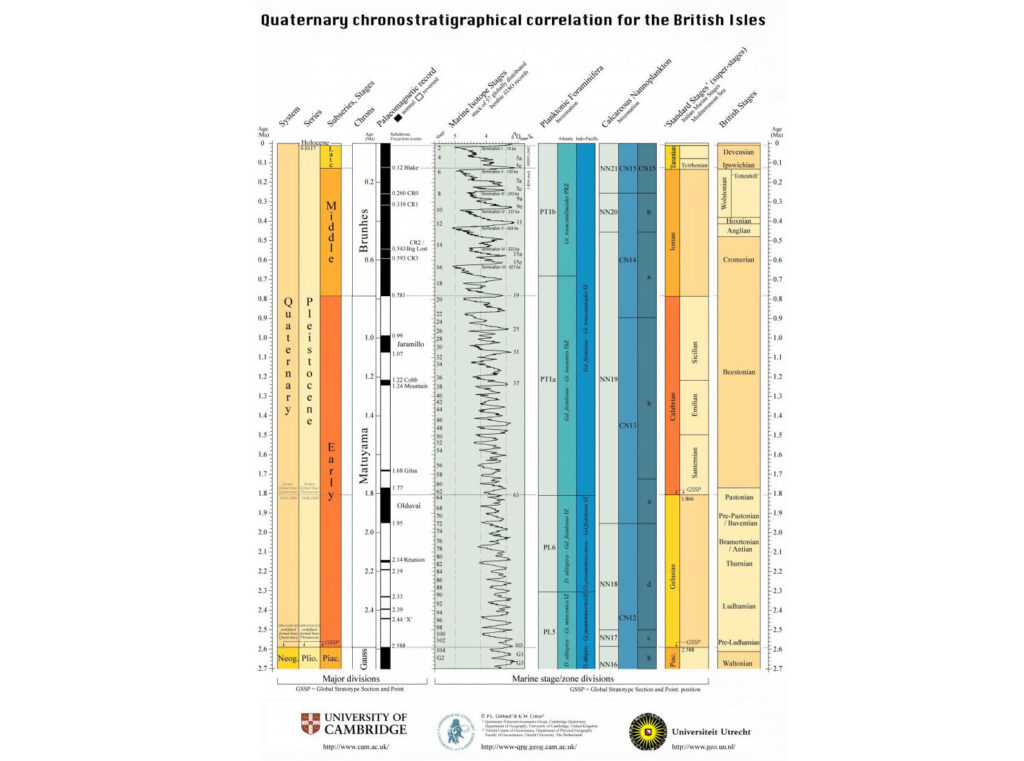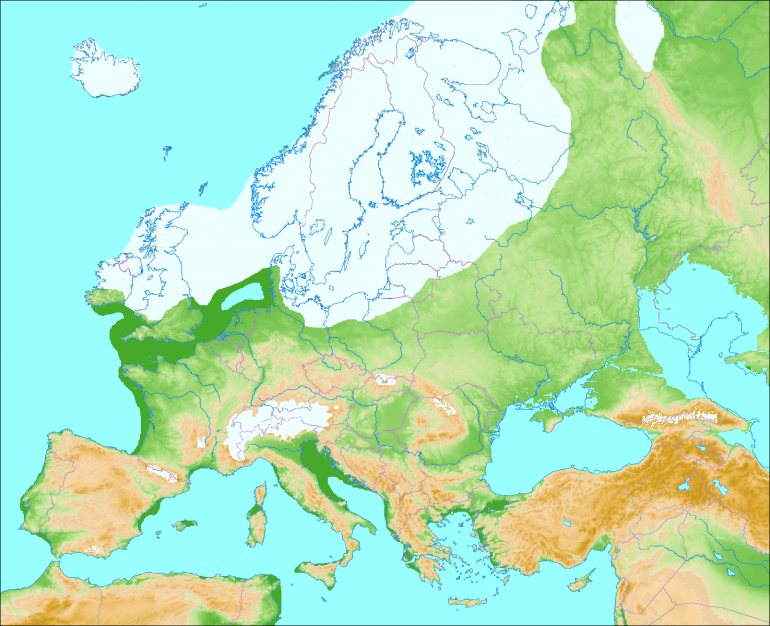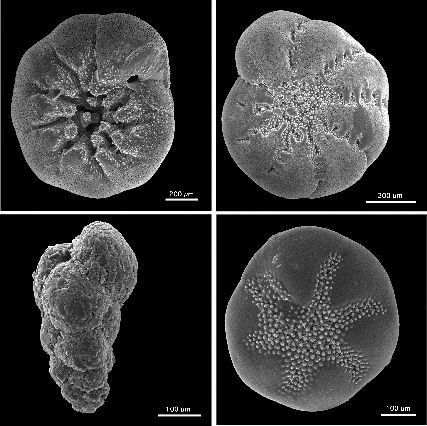The last 2.6 million years
The Quaternary is a subdivision of geological time (the Quaternary Period) which covers the last 2.6 million years up to the present day. The Quaternary and the Tertiary Periods together form the Cenozoic Era. The Quaternary is subdivided into two epochs; the Pleistocene (up to about 11,700 years ago) and the Holocene (about 11,700 years ago to the present day). The Quaternary Period has been one of extraordinary changes in global environment as well as the period during which much of human evolution took place.


The Quaternary: the age of the great ice sheets
Since the middle of the 19th century geologists realised that during the most recent period of geological time (widely known as ‘The Ice-Age’) there had been large changes in the landscape and the environment. Indeed it was widely accepted by the 1860s that the action of glaciers had profoundly altered the surface of the earth over wide areas, including most of northern Europe and North America. Modern scientific techniques have given us great insight into the scale and timing of the climatic changes that led to the expansion of the global ice caps to three times their present extent, causing glaciation in formerly unglaciated regions.
Deep sea sediment cores provide clues of long-term cooling
Evidence from deep sea sediment cores has shown that from about 50 million years ago onwards the earth’s climate has experienced a long-term cooling trend with ice sheet formation in Antarctica starting about 38 million years ago and development of Northern Hemisphere ice sheets between 3 and 2.5 million years ago.
The cause of this slow, inexorable, change in global environment is not fully understood; but adjustment of atmospheric circulation and chemistry, possibly due to tectonic forces and volcanic activity may have been the trigger. The uplift of mountains and changes in the configurations of land and sea had profound effects on wind systems, ocean currents, levels of precipitation and atmospheric circulation. Fluctuations in globally averaged rates of chemical weathering and volcanic activity have altered the composition of the atmosphere in a variety of ways: for example, through reducing the concentration of greenhouse gases and increasing the abundance of reflective particles in the atmosphere such as dust and sulphur aerosols.

Whatever the precise combination of factors, the Cenozoic cooling trend brought the earth’s climate close to a threshold of change where it would become more susceptible to external forcing by variables that were previously less important (notably subtle variations in the seasonal distribution of sunlight across the earth caused by cycles in earth’s orbit). With the global climate systems becoming less stable, the stage was set for the onset of colder, as well as much more variable, climate conditions.
Changes in the Earth’s orbit drives sudden, oscillating climate change
This global cooling culminated in a series of step-like, sudden, climatic changes over the last two and a half million years as the climate began to ‘seesaw’ from cool to warm and the massive polar ice caps expanded and contracted. This period includes the Quaternary Period and the latter is therefore characterised by very variable climatic conditions. At the latitude of northwestern Europe the warmer periods are known as temperate stages (or interglacials – periods between glaciations) and the colder periods as cold stages (or glacials).
The overriding controls on such vast variation in climate that has occurred during the Quaternary are three predominant characteristics of the earth’s astronomical position relative to the sun, which vary cyclically over time on different wavelengths (e.g. see the readable account in Imbrie, J. and Imbrie, K.P. 1979. Ice Ages: solving the mystery. Macmillan, London).
This theory, first adequately proposed by a Serbian mathematician, Milutin Milankovitch, who spent over 30 years perfecting it – publishing detailed accounts in the 1930s and 40s, was not confirmed (or widely accepted) until the 1970s. It is these astronomical variables that have been forcing our climate during the Quaternary and the sudden reversals in trend and the step like pattern is the product of vast positive and negative feedback systems operating in the climate system.
Anthropogenic climate change
It is thought by some that any trend in global warming will be easily outweighed by much more important overlying trends and climatic feedback systems. However, the problem is one of timescale and it is difficult to predict how human-caused changes will interact over the short and long-term with the sorts of natural variations that have been discovered through study of the Quaternary record.
Of course we cannot tell exactly how our climate will respond to gross human disturbance of atmospheric chemistry: climate modelling gives us a predicted range of global warming for the near term; but from study of past climates we know that the climate system can shift drastically when certain thresholds are crossed and ‘run-away’ feedback processes take hold, taking the climate quickly to a warmer or colder state. Whether human effects could eventually trigger a threshold-style change leading to a very different global climate is an important question and one that study of the Quaternary climate record can help to address.
The Anthropocene
Indeed, the impact of human activities on global systems is currently the subject of increased scrutiny. A proposal to establish a new series/epoch, following the Holocene, to be termed the ‘Anthropocene’ was suggested by Paul Crutzen and Eugene Stroermer in 2000. The term is being increasingly used to identify the current interval of anthropogenic global environmental change when human activity became so intense that it influenced almost all the environments on Earth. It is being considered as a formal stratigraphical division of equivalent status to Pleistocene or Holocene.
Relevance of the Quaternary Period to society today
Climate change during the Quaternary has produced a geological record dominated by sediments deposited under glacial, periglacial and temperate environmental conditions and this is, by its very nature, a fragmentary one. So we do not find neatly ordered deposits of alternating glacial (cold stage) and interglacial (temperate stage) sediments but a partial record that is very hard to piece together and which is the subject of much debate. The repeated and extensive cold stages have included some intense glaciations and these have wiped much of the preceding record leaving us with a heavily glaciated landscape with many features of indeterminate age.
Understanding the issues outlined above is of great importance to many branches of science concerned with topics as diverse as the possible future impact of global climate change, the nature of sea-level change, the history of evolution and dispersal of today’s flora and fauna, construction on (and extraction of) Quaternary sediments as well as understanding and being able to reconstruct the environments of the past.
The Quaternary Research Association exists to promote understanding of the Quaternary Period by publishing fieldguides, technical guides and an international journal, as well as holding field meetings and speaker meetings on a regular basis. Our website outlines our planned meetings and publications, and also provides a range of educational links and resources.
